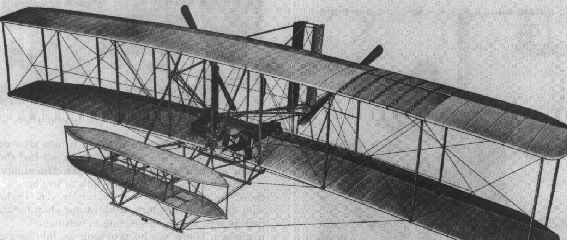Our tables of air pressures and our experience in flying with the 1902 glider enabled us, we thought, to calculate exactly the thrust necessary to sustain the machine in flight. But to design a propeller that would give this thrust with the power we had at our command, was a matter we had not as yet seriously considered. No data on air propellers was available, but we had always understood that it was not a difficult matter to secure an efficiency of SO% with marine propellers.
All that would be necessary would be to learn the theory of the operation of marine propellers from books on marine engineering, and then substitute air pressures for water pressures. Accordingly we secured several such books from the Dayton Public Library Much to our surprise, all the formulae on propellers contained in these books were of an empirical nature.

Illustration of the 1903 Wright Flyer by Robert McLarren and James Fisher